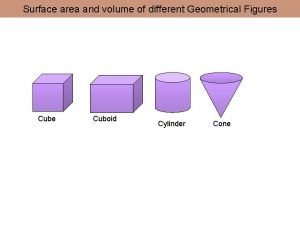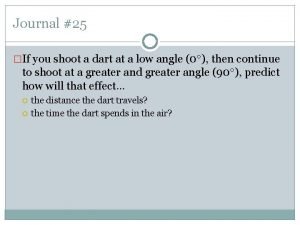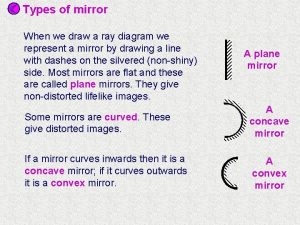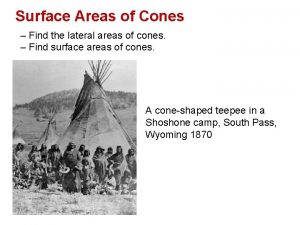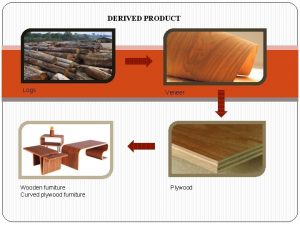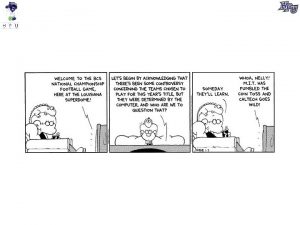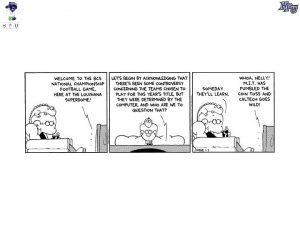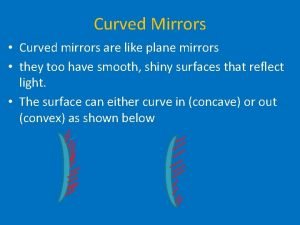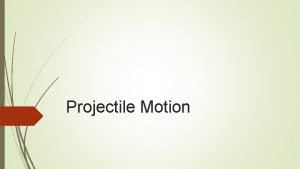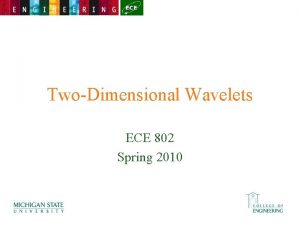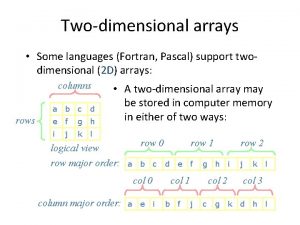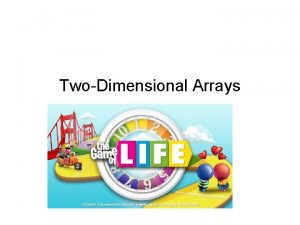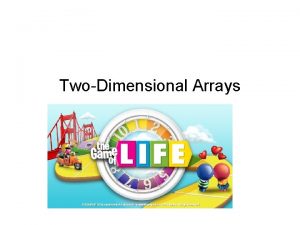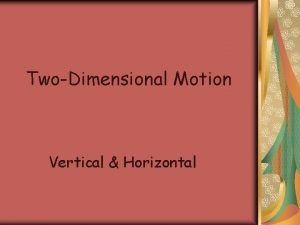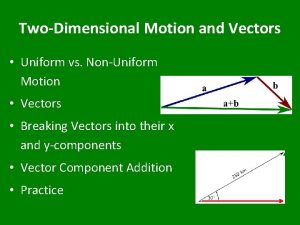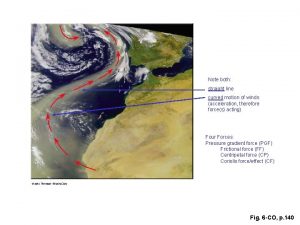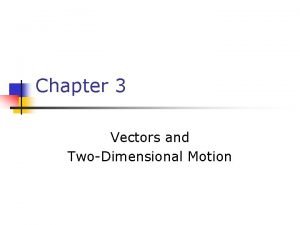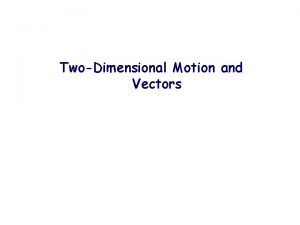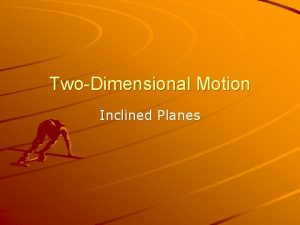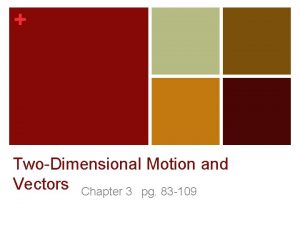Twodimensional motion Curved motion orstraightline motion that is

























- Slides: 25


Two-dimensional motion Curved motion -orstraight-line motion that is not aligned with a single axis.

Position is the (x, y) coordinates of an object on a 2 -D Cartesian coordinate system. x is the xposition. y is the yposition.

Distance (from the origin) is found using the Pythagorean theorem.

Memorize the following trig functions. Angle

Angle (Example)

Converting distance and angle to position (coordinates) A child pulls a sled with a 2 -m long rope that makes an angle of 30° with respect to the ground. If the origin is at the point where the rope is tied to the sled, what is the position of the child’s hand? -Sketch a picture. -Draw the right triangle showing the x and y components and the given angle. -Use trig functions to calculate the x and y components (i. e. legs of the right triangle).

Poll The position of an object is at x = 3 m and y = 4 m. Which arrow most closely points in the direction of the object’s position?

Poll Your table in the physics lab is 8. 5 m from a certain corner of the room at an angle of 210 from East. What is the position of your table? (Use N as the +y axis and E as the +x axis). 1. x = 7. 36 m, y = 4. 25 m 2. x = +7. 36 m, y = 4. 25 m 3. x = 4. 25 m, y = 7. 36 m 4. x = 4. 25 m, y = 7. 36 m 5. x = 7. 36 m, y = 4. 25 m 6. x = 7. 36 m, y = 4. 25 m

Poll The center of the bar, relative to a pole vaulter getting ready to run, is at the position x = 15 m, y=5 m. At what distance is the bar, relative to the pole vaulter? 1. 15 m 2. 20 m 3. 15. 8 m 4. 250 m 5. 10 m

Displacement is the vector (i. e. arrow) from an initial position to a final position. Displacement tells you direction and distance an object moved. Displacement is the “change in position” of an object.

Example What is the displacement of the toy car? Sketch the vector and write the x-displacement and y-displacement. What distance does it travel and at what angle?

Poll A Volkswagon moves from position 1 to position 2. Which arrow most closely points in the direction of the displacement of the car? t 1 t 2

Poll A soccer ball is displaced x = 14 m, y = 4 m where +x is “to the right” and +y is “forward toward the goal. ” The displacement vector tells us that the soccer ball traveled… 1. to the right and toward the goal 5. straight to the right 2. to the left and toward the goal 7. straight toward the goal 3. to the left and away from the goal 4. to the left and toward the goal 6. straight to the left 8. straight away from the goal

Total Displacement A soccer ball is kicked with a displacement x = 14 m, y = 4 m along the ground. It’s then kicked again with the displacement x = 4 m, y = 8 m. What is the total displacement of the ball from its original position? To add vectors algebraically, add their components separately. The resulting vector is called the resultant. To add them pictorially, draw them tail to head, one after the other. The resultant is from the tail of the first vector to the head of the last vector.

Example A car travels from x = 4, y = 4 to x = 4, y=4 and then to x = 3, y = 3. How far is the car from where it started? Chapter 1 Vectors Matter & Interactions PHY 221 – Dr. Aaron Titus

Poll A car travels from position 1 to position 2 to position 3. Which is larger, the distance traveled or the magnitude of the total displacement? 1. distance traveled 2. magnitude of total displacement 3. neither, because they are equal

Average Velocity In the same direction as displacement. Time interval may be large. Intantaneous Velocity In the same direction as displacement during a small time interval. Instantaneous velocity is ALWAYS tangent to the path and in the direction of motion.

Instantaneous Velocity A pendulum swings back and forth. What is the pendulum’s direction of motion at the lowest point of its swing, as it travels from right to left?

Inst. velocity is tangent to the path

Poll A comet orbits Sun counterclockwise as shown below. What is the direction of average velocity of the comet between points A and B?

Poll A comet orbits Sun counterclockwise as shown below. What is the direction of intantaneous velocity of the comet between at point A?

Poll A baseball is thrown with an x-velocity of 30 m/s and a y-velocity of -2 m/s. The ball is traveling 1. to the right and downward 2. to the left and downward 3. to the right and upward 4. to the left and upward 5. straight to the left 6. straight to the right 7. straight downward 8. straight upward

Speed is magnitude of instantaneous velocity vx vy

Poll A high jumper leaves the ground with a speed of 8 m/s at an angle of 70 with respect to the ground. What is his x-velocity and y-velocity when he leaves the ground?
 Hãy nói thật ít để làm được nhiều
Hãy nói thật ít để làm được nhiều Thơ thất ngôn tứ tuyệt đường luật
Thơ thất ngôn tứ tuyệt đường luật Tôn thất thuyết là ai
Tôn thất thuyết là ai Phân độ lown
Phân độ lown Walmart thất bại ở nhật
Walmart thất bại ở nhật Gây tê cơ vuông thắt lưng
Gây tê cơ vuông thắt lưng Premature atrial contraction
Premature atrial contraction Tìm độ lớn thật của tam giác abc
Tìm độ lớn thật của tam giác abc Sau thất bại ở hồ điển triệt
Sau thất bại ở hồ điển triệt Thơ thất ngôn tứ tuyệt đường luật
Thơ thất ngôn tứ tuyệt đường luật Frustums
Frustums Mesioincisal angle
Mesioincisal angle Curved surface area of a cylinder
Curved surface area of a cylinder Stop motion screw sewing machine function
Stop motion screw sewing machine function Plane and curved mirrors
Plane and curved mirrors Surface area of a cone
Surface area of a cone Refers to the path raised by a projectile during its motion
Refers to the path raised by a projectile during its motion The curved sealed edge between floor and wall
The curved sealed edge between floor and wall Uses of concave mirror
Uses of concave mirror Curved inclined plane
Curved inclined plane Prism with 6 faces
Prism with 6 faces Transitional lines in hair
Transitional lines in hair Labial outline
Labial outline Altitude of cone
Altitude of cone The curved sealed edge placed between floor and wall
The curved sealed edge placed between floor and wall Curved plywood furniture
Curved plywood furniture












